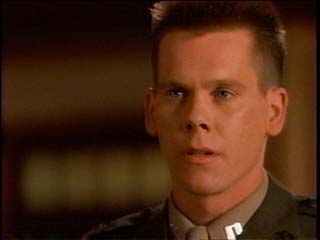 Among Christians there should be no questions or debates about the origins of life, the earth or the universe. |
||||
|
– How important is this for Christians to deal with? Dr. Danny Faulkner, Author, Distinguished Professor Emeritus, retired and now on staff with Answers in Genesis and its Creation Museum responded:
True, but Dr. Faulkner misses the elephant in the room. Dr. Hugh Ross, Astronomer and best-selling author responded:
Dr. Ross’ answer not only misses the elephant in the room, but it is also very misleading. Why do the biblical creeds not mention the time of creation? (More importantly the duration.) Because that is not one of the issues they were dealing with at the time. In the first few centuries after Christ’s resurrection, the church was besieged with Christological issues – docetism (Christ only seemed to have a body but was really just spiritual), gnosticism (a whole range of errors regarding God from which we get the phrase “children of a lesser god”; errors regarding Christ; and the nature of good and evil), monophysitism (Christ had only one nature), and so on. So they were concerned with clearly and correctly defining who Christ was – that he was “very God from very God” (from the Nicene Creed) and “one person with two natures” (From the Definition of Chalcedon). The Nicene Creed was written in 325 AD; the definition of Chalcedon was written in 451. The issue of the length of creation didn’t come up until needed for evolution, and Darwin didn’t publish “Origin of Species” until 1859. So of course the creeds don’t deal with that. Dr. Ross also states big bang cosmology identifies the who of creation as the God of the Bible. Really? Perhaps he should tell that to Continue Reading |
Category Archives: Irrational Thought
Atheists – too afraid to answer
 Some Atheists are too afraid to answer the difficult questions. |
||||
|
There’s a very good article by Peter Saunders titled Twenty questions Atheists struggle to Answer: How Theism does better on the first six. Before presenting the first six issues which atheists struggle to answer (actually he’s being kind – he uses “struggle” as if they have an answer when actually atheism has no reasonable answer to the first 6.), he makes some preliminary comments. The third comment he makes – actually a challenge – is particularly apropos to a recent discussion I had. Speaking to Atheists and agnostics, Saunders says:
Of particular interest is the second sentence, a description of the toxic environment often created by atheists in their so called “discussions” with Christians or theists – discussions which are for the atheist often little more than opportunities to mock. To the list of the usual allegations I would add the allegation of “fallacious argument” a claim atheists wield as a shield against anyone who doesn’t agree with them – apparently before even reading the argument because they use it even when it doesn’t apply. Case in point, my last article – an article which ended with a hypothetical question along the lines of Pascal’s wager: Continue Reading |
Science by Fiat & failed Judo throws – Cosmos’ failed attempts to defend evolution
 In a failed attempted to defend evolutionary theory, Cosmos Episode 2 resorts to science without evidence, and evidently expects to be believed “because I said so.”
…is there a question evidence anywhere in our future? |
||||
|
In the classic 1980’s Wendy’s ad, Clara Peller, after looking at a hamburger that’s mostly bun and almost no meat famously asks, “Where’s the beef?” After watching the second episode of the reboot of Cosmos – titled Cosmos A Space Time Odyssey episode 2 – Some Of The Things Molecules Do I was reminded of that ad as I wondered “Where’s the science?” This episode of Cosmos wants to convince you that evolution is true, and it’s Yes, Cosmos took a page straight out of a judo manual: Continue Reading |
What is Rational Faith? Part 2
 The 19th century classic “Flatland” by Edwin A. Abbott is an allegory of the resulting social problems and intellectual impasse that results when a person who has been enlightened (and sees a truth beyond what’s normally possible in the physical realm) tries to present that truth to the unenlightened. Flatland is so named because it, and all its inhabitants live in a two dimensional world. When a 3 dimensional object – a being in the shape of a sphere – is introduced to a 2 dimensional Flatlander – a mathematician – the response of humans to revelations (by way of analogy) is on display.
The 19th century classic “Flatland” by Edwin A. Abbott is an allegory of the resulting social problems and intellectual impasse that results when a person who has been enlightened (and sees a truth beyond what’s normally possible in the physical realm) tries to present that truth to the unenlightened. Flatland is so named because it, and all its inhabitants live in a two dimensional world. When a 3 dimensional object – a being in the shape of a sphere – is introduced to a 2 dimensional Flatlander – a mathematician – the response of humans to revelations (by way of analogy) is on display.
As you might expect, the mathematician has the all the concepts and mathematical knowledge to understand the description of a sphere, but while he understands technically what the sphere is saying, since a 3 dimensional object is outside of the realm of the possible within a 2 dimension world, he has a hard time believing what the sphere is saying is true – until the sphere performs miracles – that is to say feats that are miraculous to the two dimensional characters of the story, yet totally understandable to a 3 dimensional person (such as the reader). The main conflict of story centers around the beliefs of most flatlanders: since – as far as they are concerned – 3 dimensional objects are impossible and don’t exist, anyone who claims they are possible (or has seen one) is either insane or dangerous or both, and thus must be placed permanently in a mental institution or must be put to death. Without delving any further into the story, let me point out what Abbott so masterfully illustrates using concepts that we, as 3 dimensional beings, readily understand by his analogy: Continue Reading
